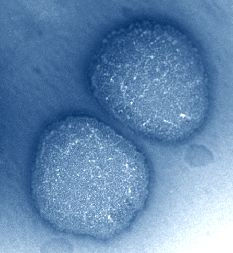By comparative sequence analysis with methanogen genomes, including those of the mesophile Methanosarcina barkeri (Tmax: 40oC), the thermophile Methanosarcina thermophila (Tmax: 55oC) and the extreme thermophile Methanococcus jannaschii (Tmax: 85oC) it will be possible to identify a subset of genes unique to the cold-adapted methanogen. In silico protein structure comparisons may also highlight adaptive strategies. In addition to the evolutionary implications inherent with comparing mechanisms of archaeal cold-adaptation with those in Bacteria and Eukarya, completion of the M. burtonii genome sequence will expand our understanding of the organismal and metabolic biocomplexity that has evolved in association with cold-adapted microorganisms. Completing the genomic sequence of this extremophile will contribute to the long-term goal of establishing the global cold-adaptive strategies of microorganisms and defining the boundaries of life on Earth and in extraterrestrial environments. References Franzmann, P.D.,
Springer, N., Ludwig, W., Conway De Macario, E. and Rohde, M. 1992.
A methanogenic archaeon from Ace Lake, Antarctica: Methanococcoides
burtonii sp. nov. System. Appl. Microbiol. 15: 573-581. Thomas, T., Kumar, N. and Cavicchioli, R. 2001. Effects of ribosomes and intracellular solutes on activities and stabilities of elongation factor 2 proteins from psychrotolerant and thermophilic methanogens. J. Bacteriol. 183: 1974-1982. Siddiqui, K.S., Cavicchioli, R. and Thomas, T. 2002. Thermodynamic activation properties of elongation factor 2 (EF-2) proteins from psychrotolerant and thermophilic archaea. Extremophiles Online First: 29 January DOI 10.1007/s007920100237. Thomas, T. and Cavicchioli, R. 2002. Cold adaptation of archaeal elongation factor 2 (EF-2) proteins. Current Protein and Peptide Science. 3(2) (in press) Papers with some information McMeekin, T.A.,
Nichols, P.D., Juhasz, A. and Franzmann, P.D. 1993. Biology and biotechnological
potential of halotolerant bacteria from Antarctic saline lakes. Experientia.
49: 1042-1046. Franzmann, P.D. 1996. Examination of Antarctic prokaryotic diversity through molecular comparisons. Biodiversity and Conservation. Summons RE. Franzmann
PD. Nichols PD. 1998. CARBON ISOTOPIC FRACTIONATION ASSOCIATED WITH
METHYLOTROPHIC METHANOGENESIS. Organic Geochemistry. 28:465-475. Franzmann, P.D.,
Roberts, N.J., Mancuso, C.A., Burton, H.R. and McMeekin, T.A. 1991.
Methane production in meromictic Ace Lake, Antarctica. Hydrobiologia.
210: 191-201. |
||
|
||
Methanococcoides burtonii DSM 6242

